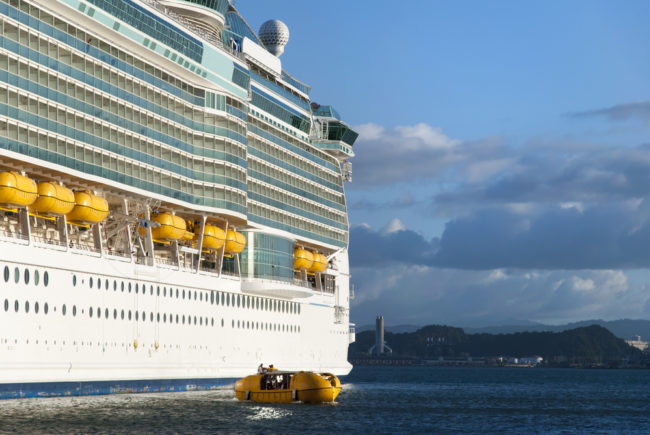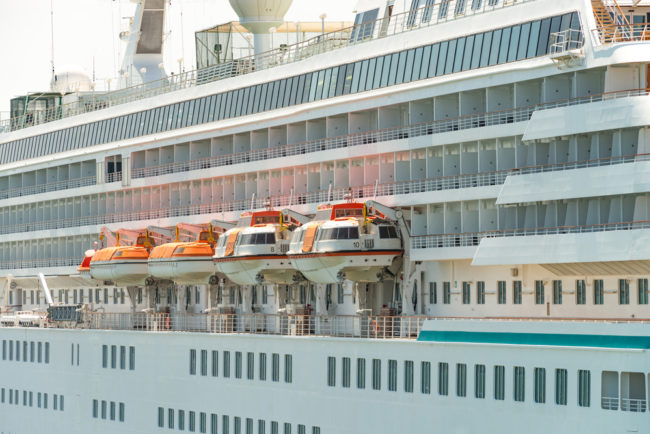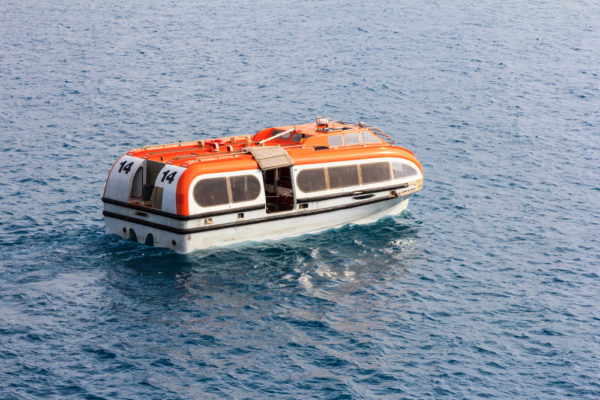The Titanic disaster was more than 100 years ago, and it remains a vivid, cautionary tale. Have we truly learned from the mistakes of the past? Today, are there enough lifeboats on cruise ships sufficient to save every single person on the ship? With the combined numbers of passengers and crew, the capacity of today’s modern cruise ships are often three or four times greater than that of the Titanic.
Contemporary lifeboats are required by law to have a sufficient number of lifeboats onboard to ensure a seat on a lifeboat for every soul on board the ship. Most ships have extra lifeboats that exceed the ship’s passenger capacity to accommodate for lifeboat malfunctions, etc.
While ships are designed and regulated so that everybody is guaranteed a spot on a lifeboat should the need arise, there is no guarantee that this will always be achieved. However, the likelihood of the ship sinking is extremely low, with a far higher risk associated with everyday tasks like driving to work. The last major cruise ship disaster involving lifeboats was the Costa Concordia wreck in 2012.

Are There Enough Lifeboats On Cruise Ships?
The number of lifeboats on cruise ships is highly regulated by SOLAS, an acronym referring to the International Convention for the Safety of Life at Sea. Each ship must have lifeboats situated along each side of the ship, with a minimum of 37.5% of the ship’s passenger capacity accommodated on each side.
Ships will exceed this number in most cases, usually accommodating around 150% of the total number of souls on board. And all of that extra space does not sit idle. Typically, a cruise ship will use its own lifeboats as tender boats when it needs to tender passengers to shore. (If you’re not sure what a “tender” is, check out our tips for first-time cruisers.)
Why We Care About Lifeboats On Cruise Ships
The first thing that comes to mind when mentioning lifeboats on a cruise ship is the Titanic. This is because it is a well-known fact that the Titanic simply did not have enough lifeboats to accommodate all of the passengers on board.
This was mostly due to outdated regulations and the fact that it was never anticipated that every soul on board would need to leave the ship simultaneously.
Despite not having a sufficient number of lifeboats, some were broken before they could be used, and several of them left the vicinity of the sinking ship with only half the number of passengers they could have potentially carried.
The case of the Titanic has served as the ultimate precedent in ensuring that everybody on the ship has a spot on a lifeboat should the need arise to abandon the ship. And, notwithstanding what happened with the Costa Concordia, one of the essential functions of a cruise ship captain’s job is to supervise the overall safety of the ship.
If the ship runs into trouble of any sort, and the entire contingent of individuals on board need to leave the ship immediately, there must be a series of accessible lifeboats with a combined capacity for every person on the ship.
This is the only way to ensure the survival of everybody on board should the ship sink or catch fire.

What Is The Design Of A Lifeboat
Lifeboats are usually one of three designs, but the most popular is the fully enclosed option which provides protection for passengers whatever the weather conditions. Traditionally, the primary focus of a lifeboat was survival, and so the design was based solely with survival in mind.
However, these days a cruise ship’s lifeboats can be multipurpose — used to ferry passengers to the port as necessary. And, as cruise ships have grown bigger and bolder, this has carried over to the lifeboats in some instances.
For instance, Celebrity Edge had lifeboats that are downright luxurious. The Edge Launches have air conditioning, plush bucket seats, and picture window views. As Celebrity has said, the “Edge Launches are desinged to get you to your destination in luxurious style.”
Lifeboats are built out of non-combustible materials to ensure that they are flame-retardant. They are built to be completely stable even when filled to capacity, and they are able to be deployed while the ship is moving at a maximum speed of 5 knots.

How Many People Can Fit In a Lifeboat
The usual maximum capacity for lifeboats is around 150 people. This is a number that has been used for a number of years. New megaships have adopted the use of larger lifeboats that can accommodate 370 people, which means that fewer lifeboats are needed in order to meet the required capacity.
Lifeboats Today – Do They Have Enough Room For Everyone On Board
Contemporary lifeboats are carefully designed to accommodate a specific number of passengers, with a designated seat for every individual on board. No lifeboat will exceed its capacity, ensuring that there is sufficient space for everybody on board.
How Big Are Lifeboats On Cruise Ships
All lifeboats on cruise ships are usually around 7.3 meters or longer, with all seats able to support a 100 kg person (220lbs). Most lifeboats have the capacity for 150 people.
How Do Lifeboats Work On Cruise Ships
The majority of lifeboats are lowered from the boat deck on the ship (once the passengers are on board) by cradle arms that swing out and lower the boats onto the water using cables. This system is designed to lower the boat onto the water as quickly as possible to ensure that it is able to get passengers away from the ship.
Where Are The Lifeboats On a Cruise Ship?
Lifeboats are located along the sides of the ship on the deck that is the most easily accessible to the majority of the passengers and crew. This deck is usually named the boat deck, ensuring that passengers and crew know exactly where to go in the event of an emergency.

Inside Lifeboats On Cruise Ships
Lifeboats are designed with one thing in mind – survival. The design focuses on fitting in as many people as possible to ensure their survival. The center of a lifeboat is most often oval in shape, with the center area blocked out for structural elements.
There are seats around the external perimeter of the boat, with padding for the basic comfort of the passengers. Equipment is usually stored in compartments underneath the seats. The equipment includes everything needed to survive at sea while awaiting further assistance, including water, food rations, and numerous other items.
In the front center of the boat, above the diesel engine, there is the command console from where the boat’s pilot will ensure that everybody reaches safety.
This post may contain affiliate links that could provide a commission to this website (at no additional cost to you). See our Disclosures Page.
Bestselling Life Jackets & Vests
Conclusion
With contemporary regulations as well as strict training protocols enforced for all staff onboard a ship, you can pretty much be assured that you will have a place on a lifeboat if the ship you’re traveling on is ever in need of evacuation while you’re on board.
Regulations ensure that there are enough lifeboats to accommodate all passengers and crew onboard the ship, and an extra 50% of the ship’s passenger capacity is usually catered for in order to accommodate for any failures of lifeboats.
This includes the off chance that some lifeboats may not be deployable due to the boat listing too far to one side or for any other unforeseeable circumstances.
Last update on 2025-12-13 / Affiliate links / Images from Amazon Product Advertising API
